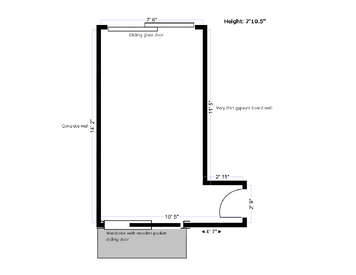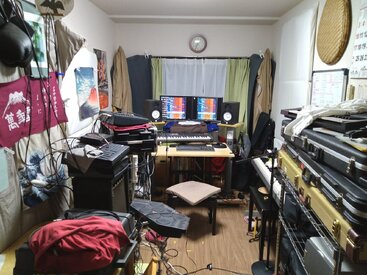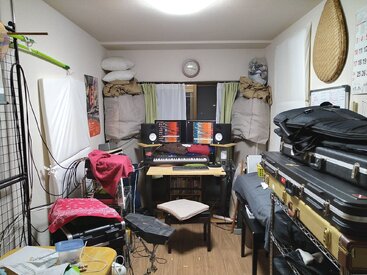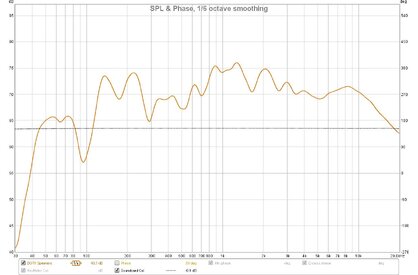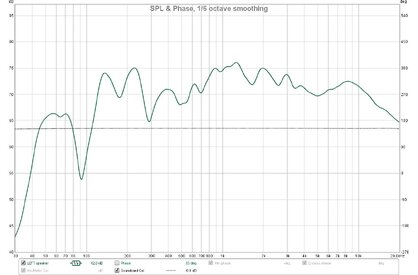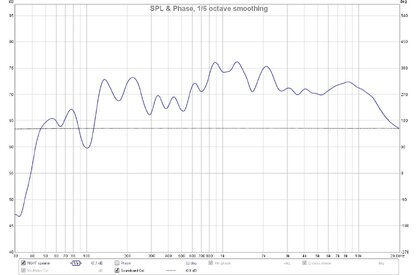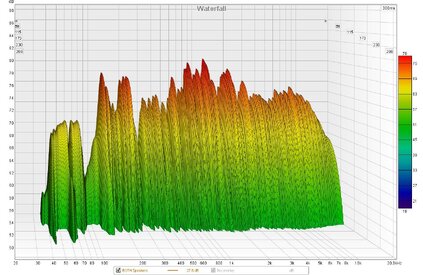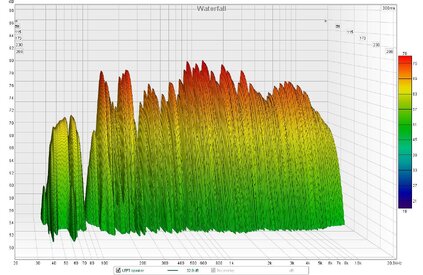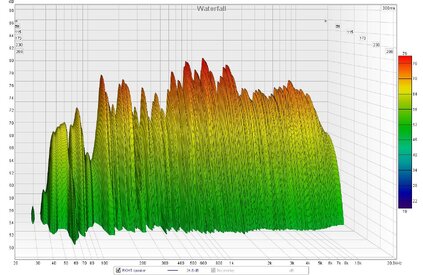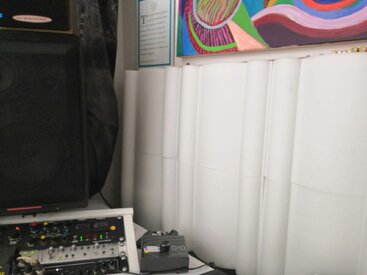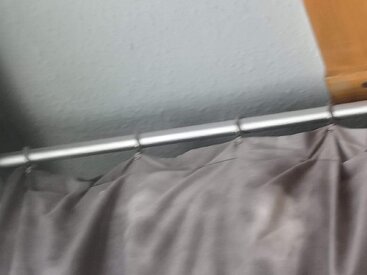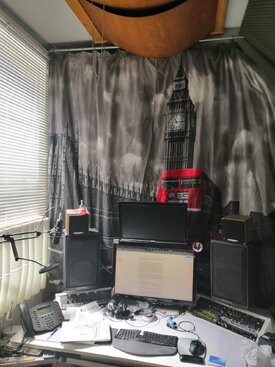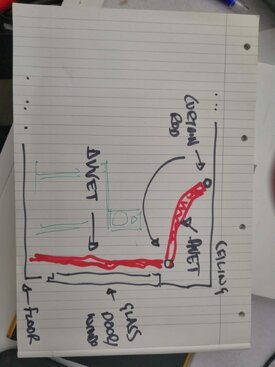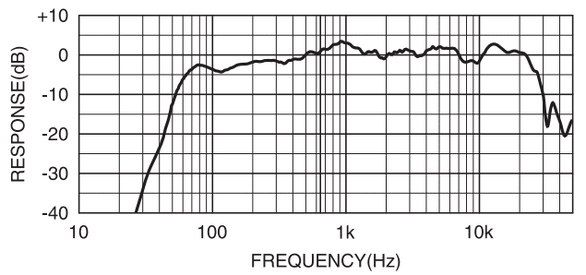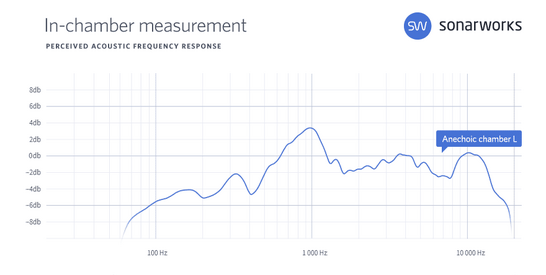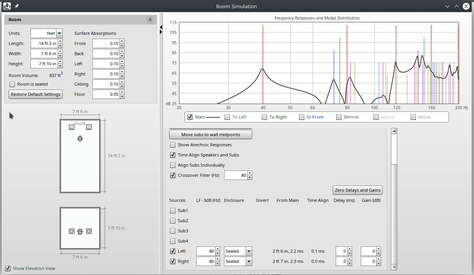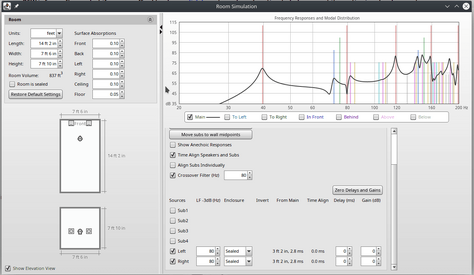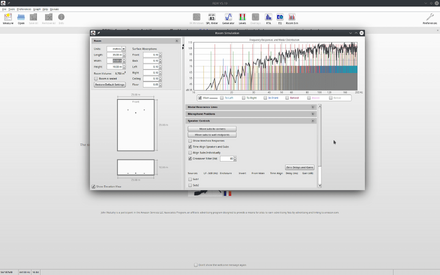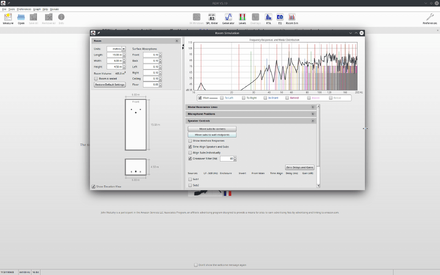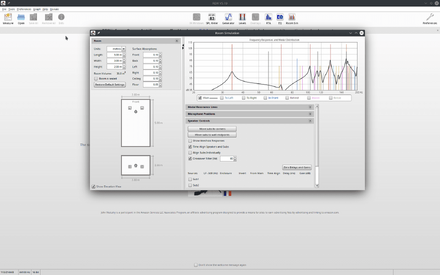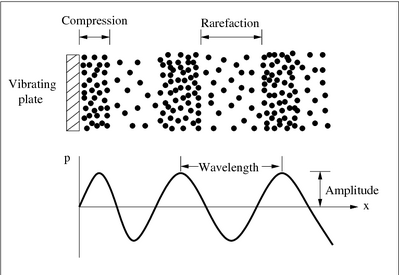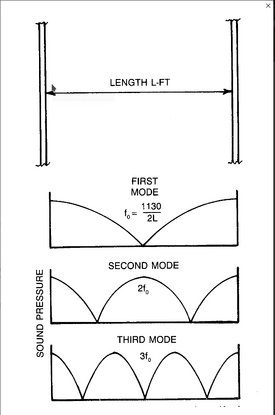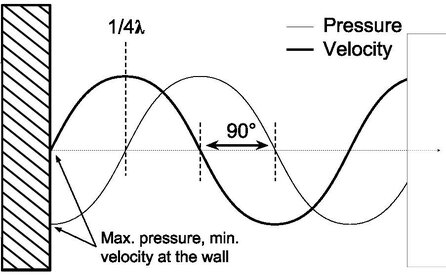Bass treatment in a small room: How to achieve the desired effects.
First, what are bass frequencies? I can’t find an agreed definition. Wikipedia says 16-256 Hz, in other words the musical bass definition. For me, bass mainly is less than 100Hz, that is low bass instruments, bass drums, and so on. Let’s compromise and say below 200 Hz or so. So how do we treat the region below 200Hz?
First, why do we need to? It’s because in a small room the bass response will initially be defined by the eigentones. Eigentones, “own tone” or better “self tone” from the German, are the resonant frequencies defined by the room dimensions.
In a very large room - say over 120ft/35m in its largest dimension - there are many eigentones in the 20-200Hz region: see image 1
In a large room, say 40 ft/12m still there are many resonances in the bass region: image 2
In a small room, there are very few: image 3.
This means that in a small room the eigentones in the bass region have a tendency significantly to relatively emphasise the frequencies at which they occur, distorting the listening experience.
So, what can we do in the small room? We can’t change the frequencies of the eigentones without changing the room dimensions.
What we CAN do is smear out the resonances, so as to reduce their effect on the room.
There’s at least two main ways to do this, but both involve changing acoustical energy - movement of the air molecules - to another form of energy, usually heat, via adding resistance.
All methods of doing this are called bass trapping, but they work in different ways.
Wavelength issues
The problems with altering low frequencies come from their wavelength. For example:
40Hz (about low E on the bass guitar): wavelength is about 29 ft or 8.6 m.
120 Hz: 9.4 ft/2.9m
4000Hz: 3.4 inches/9cm
If you put 4” of foam on the wall it will completely dampen incident sound at 4000Hz and above. It will not noticeably affect 120 Hz or below. Let’s see why.
Sound waves, nodes and anti-nodes, pressure and velocity
We usually represent a sound wave as a vibrating string, like this:
See image 4 (from
https://www.acousticsinsider.com/why-bass-traps-in-corners/)
But we should remember that really this vibrating string representation is indicating the velocity with which the air molecules are vibrating, somewhat more like this:
See image 5 (from
https://www.semanticscholar.org/paper/Time-conservative-finite-volume-method-with-for-Aybay/9d91ae2dfbf99ecf355f6a7816e29b276ced982c)
In image 4, note that there is also an arrow pointing at the wall, and indicating that there there is maximum pressure and minimum movement. The minimum movement is obvious: the wall does not (to first approximation anyway) move, so there can be no movement of the air molecules.
Less intuitively obvious is the fact that the air movement of sound therefore produces maximum pressure at the wall.
The wall is a node. The point of maximum movement is an anti-node. But these are not just at the wall: there is a node at the half wavelength as well, and at the full wavelength, and so on indefinitely. And there is an anti-node of maximum movement at the quarter and three quarter wavelength, and on indefinitely.
But this image does not represent the lowest eigentone. Look at image 6. This shows symbolically the three lowest eigentones - as pressure, not velocity (which is the usual half-sine wave). There is maximum pressure at the wall (minimum velocity) and minimum pressure in the centre (maximum velocity).
We can now understand the two main ways of damping down, smearing out, this resonance.
Method 1, we can absorb the energy of the moving molecules. This CANNOT be done at the wall - as the molecules there are NOT moving. Back to image 4: the movement is at a maximum at a quarter wavelength. If we put something at that anti-node to damp the movement it will smear out the resonance and stop it being sharp.
Unfortunately, at the low E string on a bass guitar say, usually 41 Hz about, the quarter wavelength is about 7 ft/2m and that takes up a lot or space in any room, and is usually impossible in a small room. Back to image 4 - if we put the absorber around half way between the anti-node and the wall we still have near 70% of the movement going on and can damp it there while only needing a depth of 3 ft 6/1m. Usually even that is too much. But I hope it is clear that for low frequencies damping material near the wall does nothing. Those foam things in corners may look nice but at 85% useless, and the small part that does anything is usually too close to the wall.
Even top quality “bass traps” often do little to affect the response a at true bass frequencies.
For example, here’s some good panels:
https://gikacoustics.co.uk/product/freestand-bass-trap/
If you check the absorption, it falls off very rapidly at bass frequencies. I’d call them wideband absorbers myself, though enough of them would have some effect at bass frequencies - but not enough effect.
Which brings us to
method 2: absorbent damped panels.
Back to diagram 4: the highest PRESSURE is at the wall node (and other nodes). So what if we let the wall move? The high pressure will move the wall around. If we then put some resistance into that movement, then we have absorbed and broadened, smeared, the resonance peak again. This is how diaphragmatic bass traps work. They don’t need to be a quarter wavelength deep at the frequency of operation, so they are very suitable for small rooms. However they are quite expensive to buy.
You can make them: here’s one good guide:
https://www.acousticfields.com/how-to-build-a-diaphragmatic-absorber/
There’s more info here:
https://www.audionirvana.org/forum/the-audio-vault/room-acoustics-and-treatment/101463-diaphragmatic-bass-traps
And many other places round the net.
Finally, there are other things that can be done. There's a thing called a Helmholtz absorber. The idea here is that a closed volume with a small hole in it will resonate, think of blowing over a beer bottle. If you put some resistance in the neck of the bottle it will absorb energy at that frequency. This is useful for “spot” frequency fixes, where there is one nasty resonance to tame, but it has been used more broadly in the past. (I have one in my room here).
There’s also active correction, but this is quite costly and I’ve not heard it in action myself. Should in principle work though:
https://www.psiaudio.swiss/avaa-c20-active-bass-trap/
Summing up
In a big studio where there’s room for it, deep (>1m/4ft) simple absorption is usually used because it is guaranteed effective.
In a small studio you can usually treat the corners of the room, but the absorber (it can be anything - rock wool, polyester, or a duvet!) needs to be out from the corner as far as is feasible. It needs to be where the air is moving at the problem frequency. Packing stuff into the corner is less effective the closer it is to the walls.
Also in a small studio you can use diaphragmatic absorbers but it is best to do this after you know what your problem frequencies are, as they need to be adapted or tuned accordingly.
Finally, spot frequencies can be treated using tuned Helmholtz absorbers, but that is definitely a final step as it’s hard to get right (ask me how I know

If you are wealthy active absorption may be an option.
Just remember, all the passive methods work by turning movement of air molecules into heat in two principal ways, by absorbing where it is moving most of by making the room boundaries move a little.
Finally, as I guess you are a bass player, try damping the bottom E on your guitar. The whole string at bottom E is a half wave. If you damp it just below the half way point (quarter wave, maximum movement) it will not produce a harmonic, it will be very damped. If you try to damp at the bridge that is much less effective. That’s the principle in action for absorbent materials at low frequencies.
HTH.
Reference
A classic paper:
https://www.acousticsciences.com/media/articles/room-acoustics-and-low-frequency-damping-aes-1986
More:
https://www.gearslutz.com/board/bas...s-diaphragmatic-resonators-amp-limp-mass.html













